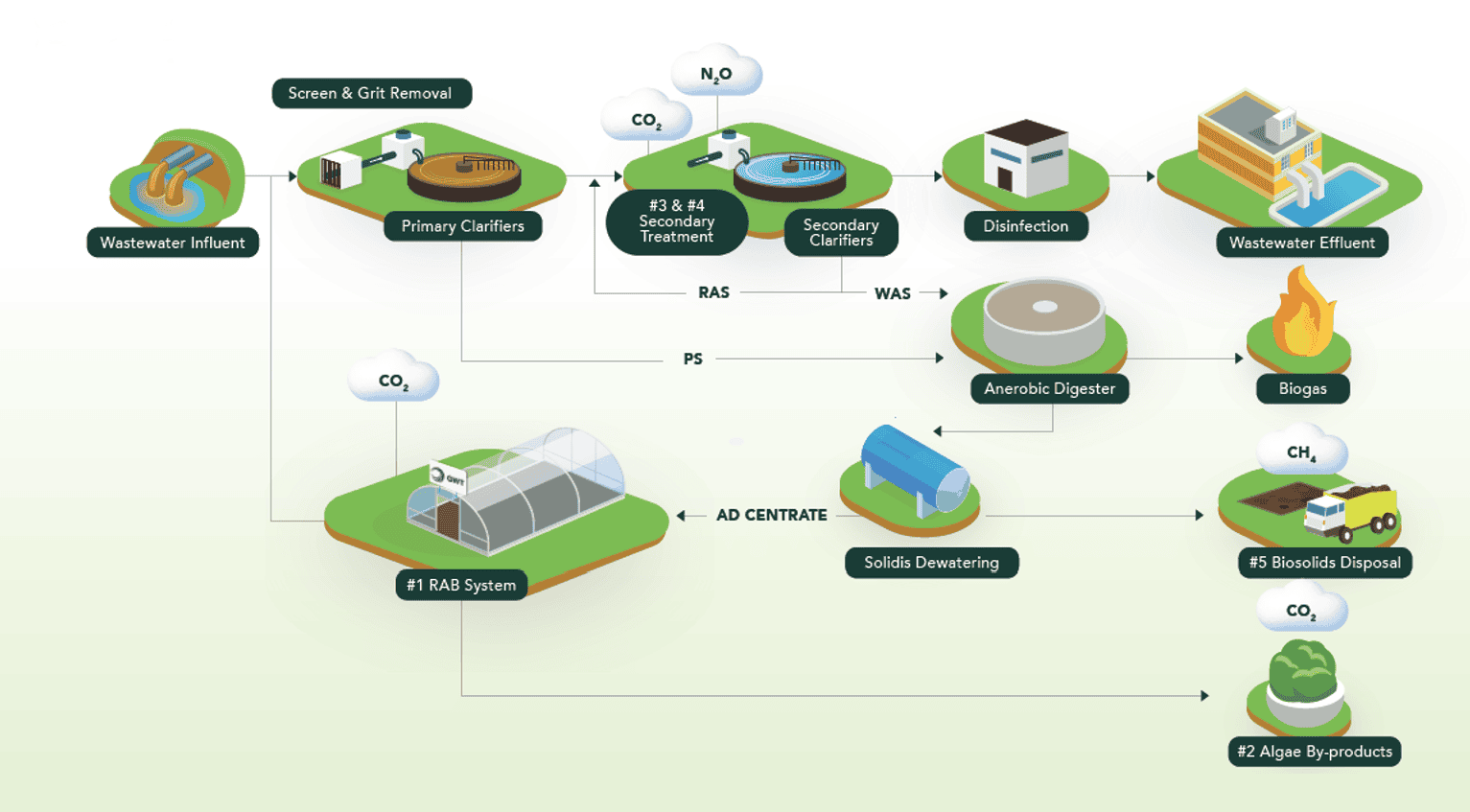The most sustainable wastewater treatment system on the market.
Reliable • Effective • Economical
When compared to other wastewater treatment technologies:
- Reduces carbon footprint
- Has an ultra-low energy input
- Recovers & reuses of nitrogen and phosphorus
- Produces a valuable algae byproduct
- Requires no chemical inputs
- Has the lowest life-cycle costs on the market

Using nature to solve problems.
Our innovative system uses atmospheric CO2 and sunlight to grow algae on a fixed film, conveyer belt that rotates in and out of a wastewater reservoir.
The algae growing on this belt consumes N and P, gets scraped off, and gets pelletized for a sellable algae byproduct.

The 17 Global Goals
At Gross-Wen Technologies, we take our obligation to our planet very seriously. Our technology and our mission directly align with and help impact several Global Goals.
Low Carbon Footprint
Captures CO2 from the atmosphere into algae biomass.
Low-Energy Wastewater Treatment
The RAB™ system requires less energy compared to traditional wastewater treatment systems.
Carbon Offset
RAB™ offsets carbon emissions generated by conventional treatment technologies.
Carbon Capture
For every ton of algae produced, 2 tons of carbon are captured from the atmosphere.
Nitrogen & Phosphorus Recovered
Nitrogen and phosphorus are removed from the wastewater to keep our ecosystem clean.
Sustainable Algae Products Produced
Algae produced in the RAB™ system can be used in a variety of renewable and eco-friendly applications.
The 17 Global Goals
At Gross-Wen Technologies, we take our obligation to our planet very seriously. Our technology and our mission directly align with and help impact several Global Goals.
How does the RAB™ impact carbon emissions at wastewater treatment plants?

#1
Captures CO2 from the atmosphere into algae biomass.
#2
Produces sustainable algae byproducts offsetting the emissions of conventional products.
#3
Reduces the energy requirements for conventional nitrification/ denitrification.
#4
Reduces the nitrogen loading to the secondary treatment process reducing N2O emissions.
#5
Reduces the organic loading and biosolids production, reducing disposal-related emissions.